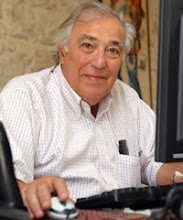
11/09/2009
An American in Paris

10/23/2009
All roads lead to Bages...

So go ahead as I did and find out more about the undisputed queen of 21rst century pop rock, who has the great idea of seeking inspiration in Médoc wine:
http://www.pinkspage.com/
As regards Carey Hart, this well illustrated young man deserves to be better known !
Click on:
http://fr.wikipedia.org/wiki/Carey_Hart for his bio, admire him too... http://video.google.com/videoplay?docid=-951396858852588900#
Was he under the influence of some grand cru ?
Even more so than the Perpignan train station, dear to Salvador Dali, Bages will soon be the center of the world !
10/21/2009
2009?

Now that the new harvest has been lying safely in our vats, the vinification process now begun, I can yield to custom and provide a first glimpse of our just completed grape harvest. Neither particularly early nor late, it was aided by the fine weather. I could inundate you in dates, figures and more or less technical considerations on the maturity of the different grape varieties etc. Instead I’ll get straight to the heart of the matter:
The actual picking of the harvest (9 and a half days at Lynch-Bages, 11 days at Ormes de Pez), was spread over a period of 18 days, between 23 September and 10 October. When vatting, the musts of the red grapes were rich in sugar and the potential sugar content averages high, the highest in 50 years (at least!): 13.3% at Lynch-Bages and 13.2% at Ormes de Pez.
10/13/2009
Wine, the only time machine
that really works

10/05/2009
October get together

Side by side, the five of us have experienced the past 40 years of the Bordeaux wine scene, 40 phenomenal years that have seen more changes in our craft than the two preceding centuries combined. Our professional lives have run in parallel. We have each known the same joys, the same difficulties and probably at times the same moments of discouragement. And we also know that we’ve had the great luck to find ourselves in the right place, at the right time. Through it all, none of us has swerved from his or her path. Deep in our hearts, we are happy to have contributed, each in his or her own way, to the renewal of Bordeaux wines and to their success the world over.
10/02/2009
What happened to molecular Cuisine ?
 Dried on a bed of vine shoots then cooked à la bordelaise, with a little parsley and shallot, they accompanied the legs of lamb that Milou had patiently been twirling at the end of string over the glowing embers of vine stumps and shoots. With, of course, as tradition demands, a few green beans to lend the meal some légèreté…
Dried on a bed of vine shoots then cooked à la bordelaise, with a little parsley and shallot, they accompanied the legs of lamb that Milou had patiently been twirling at the end of string over the glowing embers of vine stumps and shoots. With, of course, as tradition demands, a few green beans to lend the meal some légèreté…9/29/2009
The sky's the limit
 Satellite photography offers the vigneron a new tool for grape selection. An unexpected but fruitful encounter of 21rst century space technology and a 1000s year old trade.
Satellite photography offers the vigneron a new tool for grape selection. An unexpected but fruitful encounter of 21rst century space technology and a 1000s year old trade.Of course the preparation work as well as the actual picking is a lot more complex and more demanding.
